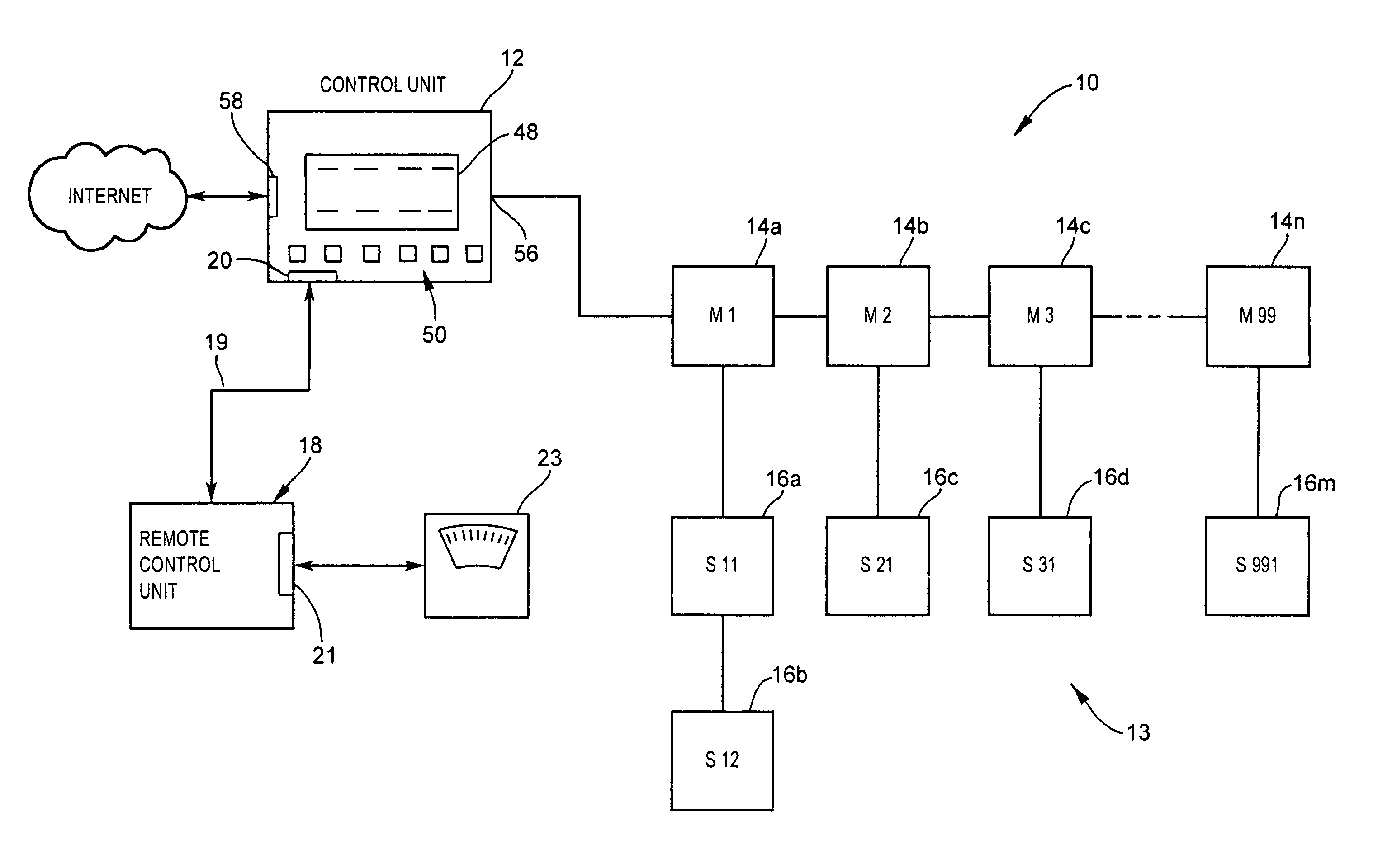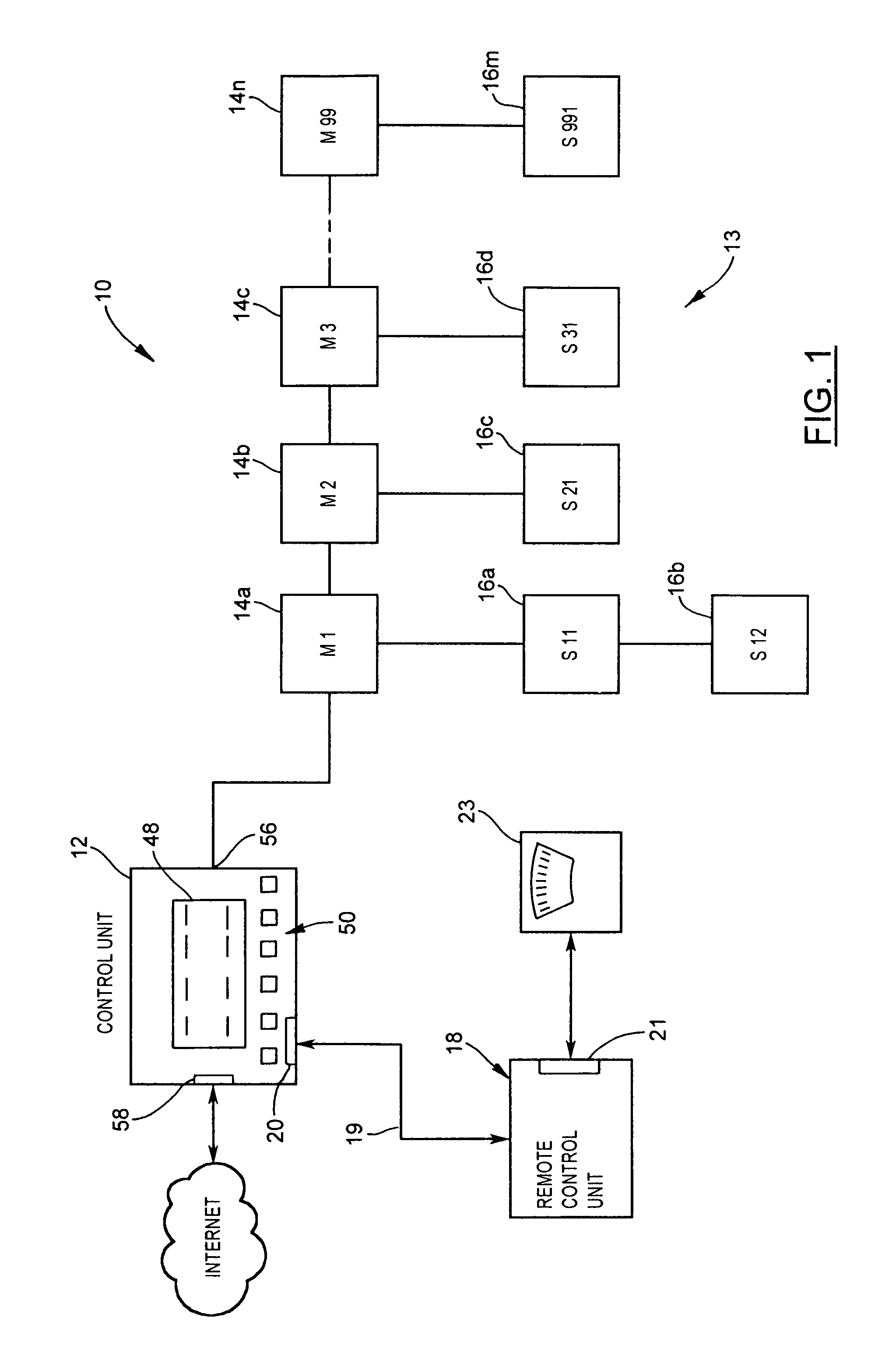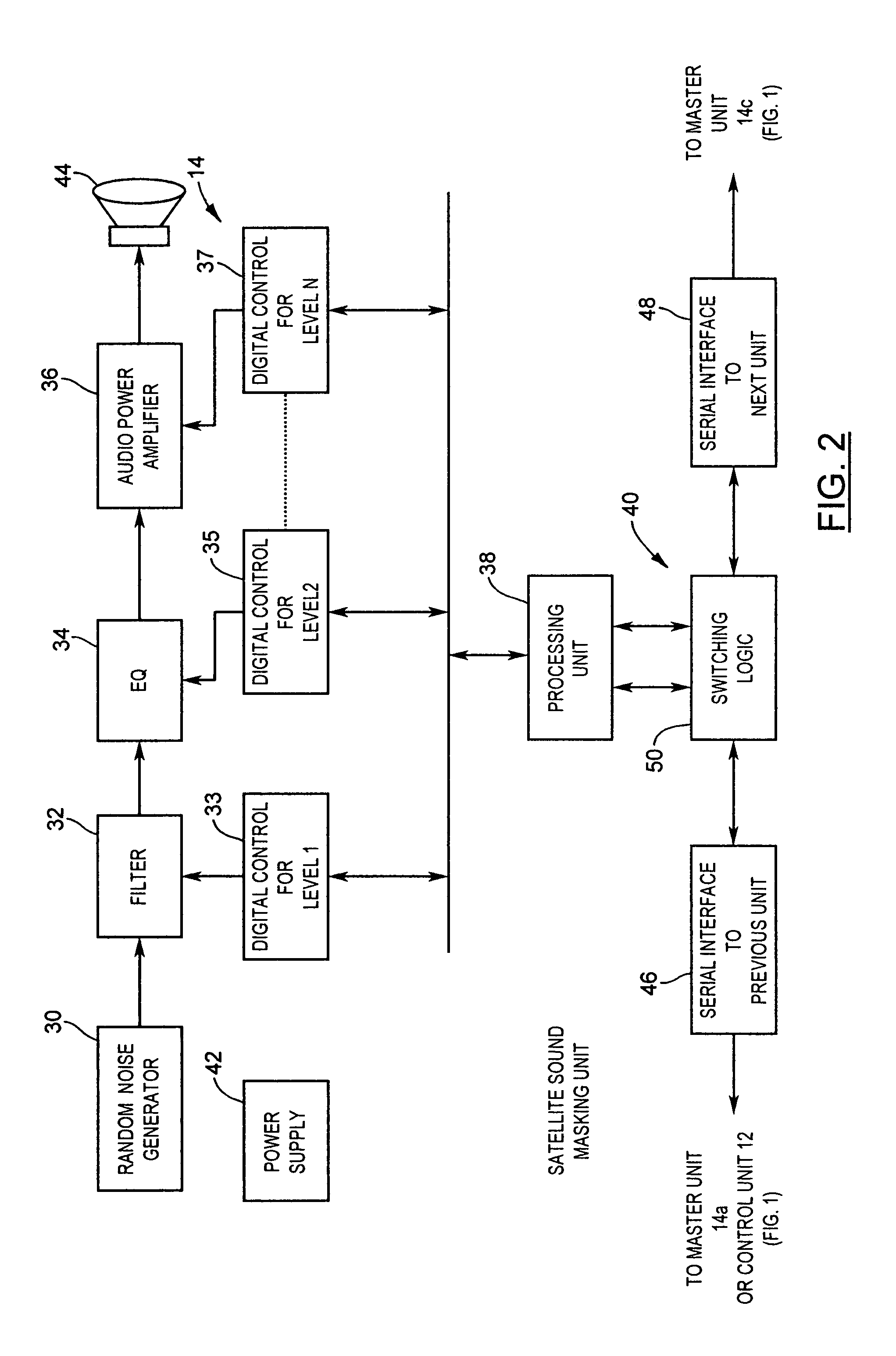Networked sound masking system
a sound masking and network technology, applied in the field of sound masking, can solve the problems of reducing the comfort level of acoustic perspective, reducing speech privacy, and high noise distraction level
- Summary
- Abstract
- Description
- Claims
- Application Information
AI Technical Summary
Benefits of technology
Problems solved by technology
Method used
Image
Examples
Embodiment Construction
[0033]Reference is first made to FIG. 1, which shows in block diagram form a networked sound masking system according to the present invention and indicated by reference 10.
[0034]As shown in FIG. 1, the networked sound masking system 10 comprises a control unit 12, and a network 13 comprising a plurality of master sound masking units 14, indicated individually by 14a, 14b, 14c . . . 14n, and one or more satellite sound masking units 16, indicated individually by 16a, 16b, 16c, 16d, . . . 16m. The physical connections for the network 13 between the master sound masking units 14 may comprise 5, 4 or 3 conductors. In a 5 conductor arrangement, two conductors carry power, two conductors provide a communication channel, and one conductor provides for paging.
[0035]The master sound masking unit 14 and the satellite sound masking units 16 provide the sound masking functionality, i.e. sound masking and signal generation and amplification. Each sound masking group, i.e. master sound masking u...
PUM
 Login to View More
Login to View More Abstract
Description
Claims
Application Information
 Login to View More
Login to View More - R&D
- Intellectual Property
- Life Sciences
- Materials
- Tech Scout
- Unparalleled Data Quality
- Higher Quality Content
- 60% Fewer Hallucinations
Browse by: Latest US Patents, China's latest patents, Technical Efficacy Thesaurus, Application Domain, Technology Topic, Popular Technical Reports.
© 2025 PatSnap. All rights reserved.Legal|Privacy policy|Modern Slavery Act Transparency Statement|Sitemap|About US| Contact US: help@patsnap.com



